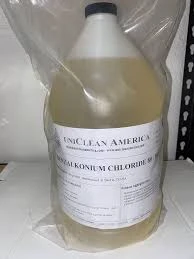cationic polyacrylamide flocculant
Cationic Polyacrylamide Flocculant An Overview
Cationic polyacrylamide flocculants have emerged as pivotal agents in a variety of industrial applications, particularly in water treatment processes. These synthetic polymers, characterized by their long chain-like structures, possess unique properties that enable them to bind with negatively charged particles suspended in water, leading to effective flocculation and sedimentation.
What is Cationic Polyacrylamide?
Cationic polyacrylamide (CPAM) is a type of polyacrylamide that has been modified to carry a positive charge. This charge is introduced through the incorporation of cationic functional groups during the polymerization process. As a result, CPAM exhibits a high affinity for the negatively charged surfaces of particulates, colloids, and organic matter commonly found in wastewater. This interaction facilitates the aggregation of these particles into larger flocs, which can then be easily removed from the water through sedimentation or filtration.
Applications of Cationic Polyacrylamide
One of the primary applications of cationic polyacrylamide is in the field of municipal and industrial wastewater treatment. When added to wastewater, CPAM improves the efficiency of clarifiers and sedimentation tanks by enhancing the settling rate of suspended solids. This is particularly beneficial for treating water with high levels of suspended solids, colloids, and organic pollutants. By using CPAM, wastewater treatment plants can achieve clearer effluent and reduced sludge volumes.
In addition to wastewater treatment, CPAM is extensively used in various industrial processes, including papermaking, oil recovery, and mineral processing. In papermaking, cationic polyacrylamide acts as a retention aid, helping to retain fine particles and fibers during the paper formation process. This results in improved paper quality and strength. In oil recovery, CPAM is employed to enhance the efficiency of water flooding techniques, helping to mobilize oil trapped in reservoirs. Furthermore, in mineral processing, CPAM can facilitate the separation of minerals through flocculation, improving the recovery rates of valuable ores.
cationic polyacrylamide flocculant

Advantages of Cationic Polyacrylamide
The use of cationic polyacrylamide offers several advantages over traditional flocculants. Firstly, CPAM can operate effectively across a wide range of pH levels, making it versatile in varying environmental conditions. Secondly, its high molecular weight contributes to its excellent flocculation properties, enabling it to form stable flocs and improve solid-liquid separation processes. Moreover, cationic polyacrylamide is generally safe for use in various application settings, as it has low toxicity and is biodegradable.
Considerations and Challenges
Despite its numerous advantages, there are some considerations and challenges associated with the use of cationic polyacrylamide. One notable drawback is its potential to produce sludge with high water content, which can complicate sludge management. Additionally, the effectiveness of CPAM can be influenced by factors such as water temperature, ionic strength, and the presence of other contaminants. Therefore, it is crucial for industries to conduct thorough testing to determine the optimal dosage and formulation of cationic polyacrylamide for their specific applications.
Conclusion
Cationic polyacrylamide flocculants play a vital role in modern water treatment and industrial processes. Their ability to enhance the removal of suspended solids and improve liquid-solid separation makes them indispensable in various sectors. As industries continue to seek more efficient and environmentally friendly methods for wastewater management and processing, cationic polyacrylamide is poised to maintain its significance as an effective flocculant. Continued research and development will likely lead to even more advanced formulations and applications, further expanding its utility in an array of fields.
-
Water Treatment with Flocculant Water TreatmentNewsJun.12,2025
-
Polymaleic AnhydrideNewsJun.12,2025
-
Polyaspartic AcidNewsJun.12,2025
-
Enhance Industrial Processes with IsothiazolinonesNewsJun.12,2025
-
Enhance Industrial Processes with PBTCA SolutionsNewsJun.12,2025
-
Dodecyldimethylbenzylammonium Chloride SolutionsNewsJun.12,2025





